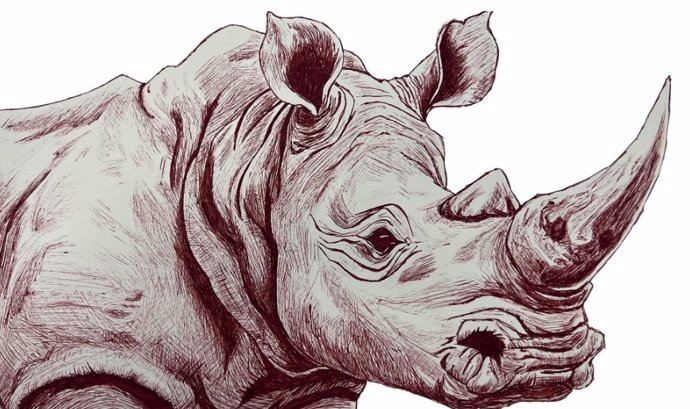A PhD student in Texas A&M University’s Department of Nuclear Engineering has collaborated with Project Rhisotope on an initiative to deter poaching and protect wildlife through the use of radiation. – KAITLYN JOHNSON/TEXAS A&M ENGINEERING
Jul 30 () –
A rhino conservation project in South Africa has pioneered the incorporation of radioactive isotopes into their horns to save them from poaching.
Project Rhisotope, involving Texas A&M, Colorado State and Witwatersrand universities, involves inserting a radioactive source into rhino horns to deter poaching. Since radioactive rhino horns would be less attractive to consumers, making them less tempting to poachers.
Besides, Radioisotopes could be detected at ports of entry with existing radiation detection technologywhich would make it easier to find the horns if they were traded internationally, according to James Larkin, a professor at the University of Witwatersrand in Johannesburg, South Africa.
The idea originated when Larkin collaborated with people looking for ways to make rhino horns less attractive to repel poachers. As a radiation professional, Larkin thought radioactive isotopes might be useful.
“It was one of those three-in-the-morning thoughts: ‘What if I put a small amount on the horn?'” Larkin said. it’s a statement“I realized that we could probably find that sweet spot where the dose was small enough that it wouldn’t harm the animal, but large enough to set off a detector.”
In 2020, Larkin met Jessica Babich, an anthropologist and industry consultant who could introduce this idea to the conservation community. “It’s about science saving rhinos, rhinos saving people, and people saving rhinos — a beautiful trilogy of possibilities and success,” said Babich, who became the chief operating officer of the Rhisotope Project.
Both Hillis and Larkin investigated what level of radioactive material would be safe for a rhino. They worked independently using different approaches so they could validate each other’s results.
Hillis created a detailed computer model of a rhino’s head and calculated potential doses. He is now publishing the results of the project, which include a total of 20 rhinos monitored to ensure the radioisotopes are not harmful.





![[Img #74137]](https://thelatestnews.world/wp-content/uploads/2024/10/Soft-robotic-finger-with-a-sophisticated-sense-of-touch-150x150.jpg)






![[Img #74137]](https://thelatestnews.world/wp-content/uploads/2024/10/Soft-robotic-finger-with-a-sophisticated-sense-of-touch-300x200.jpg)


Add Comment